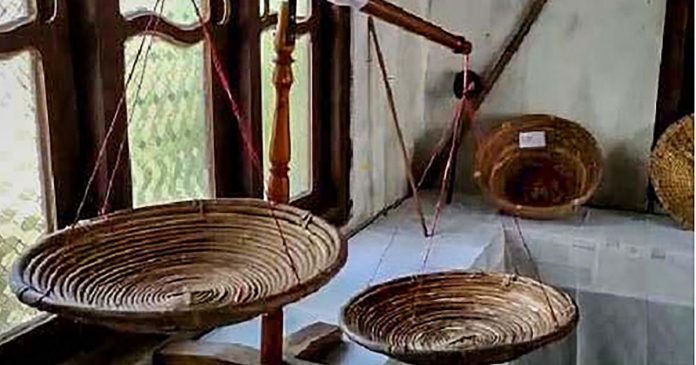Traditional farming tools, including the plough, gamusas (traditional hand-woven clothing), and bamboo fishing equipment, were displayed in the museum to preserve and showcase the culture of Miya people.
Afnan Habib | TwoCircles.net
NEW DELHI — The Assam Police, on Wednesday, detained five individuals after a “Miya Museum” honouring the state’s Muslims of Bengali descent was sealed. The museum included antiques from the everyday life of the “Miya” people. The local government shut down the museum in the state’s Goalpara district because it had been established in residence given to it as part of the Pradhan Mantri Awas Yojana-Gramin program.
Assam’s Muslims of Bengali descent have long been referred to as “Miya” or “Miyan.” Muslims from Eastern Bengal (modern-day Bangladesh) migrated to the char-chaporis, or low-lying flood plains and islets, of Assam in waves beginning in the nineteenth century and continuing until the 1971 Bangladesh Liberation War.
On Wednesday, a few hours after the Goalpara district administration closed the museum, Mahar Ali, Abdul Baten, and Tanu Kumar Dhadumiya were arrested at their houses in the respective districts of Goalpara, Dhubri, and Dibrugarh. On the same day, two others, Sadek Ali and Jekibul Ali were also taken into custody on similar charges.
The detainees will reportedly be questioned about alleged affiliations with the Ansarullah Bangla Team and Al-Qaeda in the Indian Subcontinent in connection with a case filed at the Ghograpar police station in the Nalbari district, according to GP Singh, the special director general of Assam Police, who tweeted the information.
Since April, the Assam Police have detained around 40 terror suspects connected to the Ansarullah Bangla Team terror cell. Their modules have also been busted. Himanta Biswa Sarma, the state’s chief minister, questioned how the “Miya” could be considered a separate ethnic group. At a press conference on Tuesday, he stated, “They have to answer this in the forums made by the Assam government. Is there any community in the name of Miya?”
Sherman Ali Ahmed, a former Congress MLA, first suggested creating a Miya Museum in 2020. To highlight the culture and tradition of Bengali-speaking Muslims who reside in the state’s riverine regions, he had written to the director of museums pleading for its establishment at the Srimanta Sankardeva Kalakshetra.
Traditional farming tools, including the plough, gamusas (traditional hand-woven clothing), and bamboo fishing equipment, were displayed in the museum “to preserve and showcase the culture of Miya people.” M Mohar Ali, the president of an organisation called the Asom-Miyan (Asomiya) Parishad, had set up the museum at his home in lower Assam’s Goalpara district. Before he was detained, he told the media that people who do not support the preservation of the culture of the Miya community are “anti-Assamese.”
“Miya is a part of the Assamese community,” M Ali said while speaking to a local TV channel. “We have urged the state government to keep the items used by the Miya people in the Srimanta Sankardeva Kalakshetra,” a cultural complex in Guwahati. He further said that
“There is no anti-national activity going on here. Rather it is an attempt by the Miya people to strengthen the Assamese community further.”
The lungi was the only item in the museum that belonged to the Miyas, according to Assam Chief Minister Himanta Biswa Sarma. The rest of the objects were utilized by the entire Assamese community. The chief minister stated that while the government has no issues with the museum, the display could not have been made using materials that belonged to the Assamese people.
When he denounced the spread of the “Miya poetry” in 2019, the Chief Minister was challenged by Assamese intellectuals who claimed he was being sectarian. In a press conference, the Chief Minister said, “We have now witnessed Miya poetry, Miya school, and Miya museum. I have been talking about these challenges all the time.” He further stated that the police would investigate the museum’s funding source.
Afnan Habib is a freelance journalist based in Srinagar, Jammu and Kashmir. He tweets at @afnanhabib_


